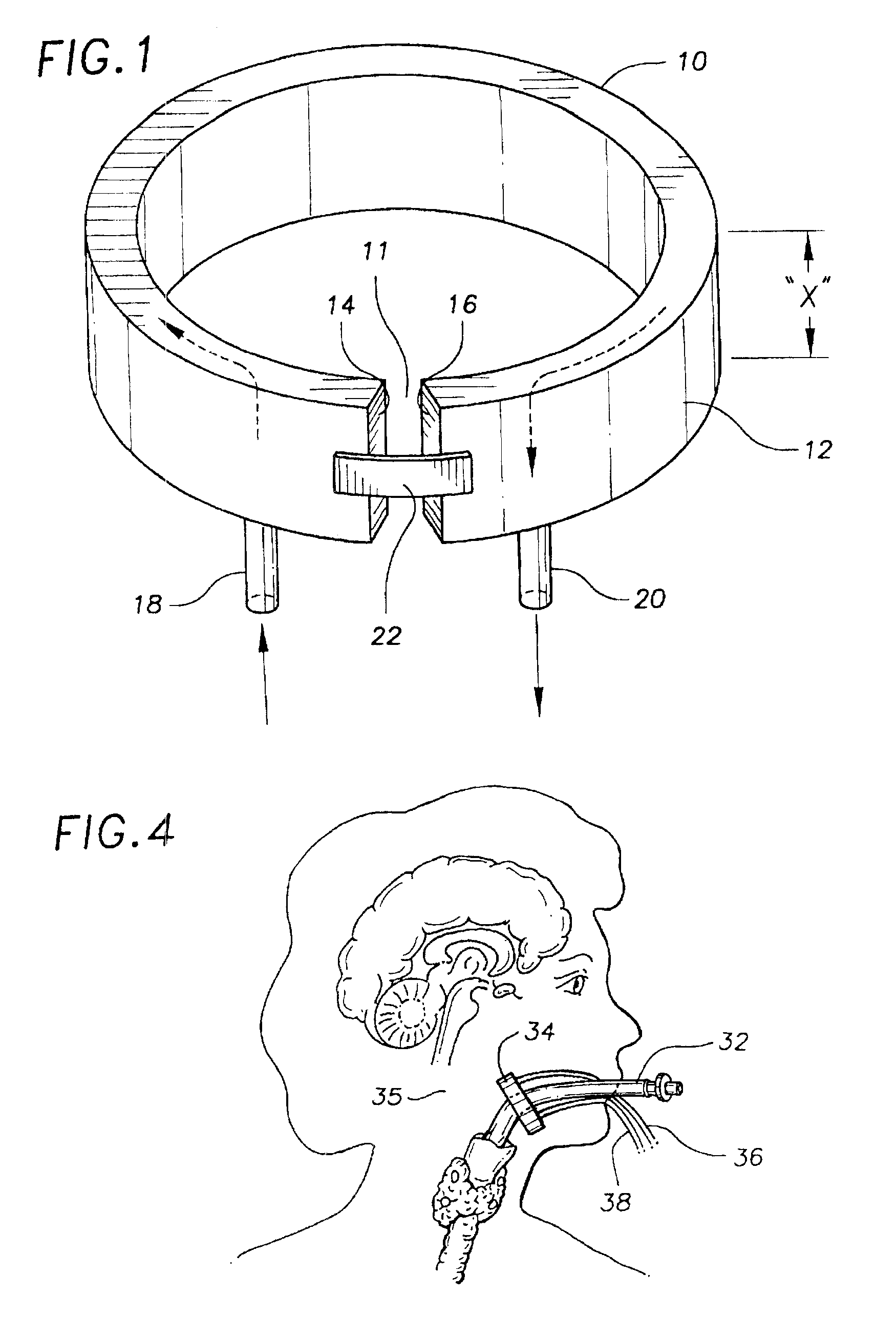Apparatus for rapid cooling of the brain and method of performing same
a brain and apparatus technology, applied in the field of apparatus and brain cooling, can solve the problems of reducing the chance of tissue damage, and irreversible damage to the brain tissue, and achieves the effects of low heat conductivity, good thermal contact, and easy application
- Summary
- Abstract
- Description
- Claims
- Application Information
AI Technical Summary
Benefits of technology
Problems solved by technology
Method used
Image
Examples
Embodiment Construction
[0017]Referring to FIG. 1, a substantially circular collar 10, containing a gap 11, has a channel 12 running about the circumference of the collar 10. The ends 14,16 of the channel 10 are sealed, leaving the gap 11 in the collar 10. Inlet tube 18 and outlet tube 20, located proximate to the ends 14,16, serve as entrance and exit for a coolant flowing through the collar 10 in channel 12. The collar's height “X” is sufficient to cover a large portion of the carotid artery in the neck of a patient having the collar 10 in place. A fastener 22, such as a Velcro strip, is used to firmly secure the collar 10 about the neck of the patient. The collar 10 is fabricated from either a fabric or plastic having a good thermal transfer coefficient, and capable of sustaining coolant fluid flow through the channel 12 without leakage.
[0018]Referring to FIG. 2, the collar 10 is shown in position on the neck 24 of a patient. The collar 10 is in contact with the carotid artery 26 substantially over the ...
PUM
 Login to View More
Login to View More Abstract
Description
Claims
Application Information
 Login to View More
Login to View More - R&D Engineer
- R&D Manager
- IP Professional
- Industry Leading Data Capabilities
- Powerful AI technology
- Patent DNA Extraction
Browse by: Latest US Patents, China's latest patents, Technical Efficacy Thesaurus, Application Domain, Technology Topic, Popular Technical Reports.
© 2024 PatSnap. All rights reserved.Legal|Privacy policy|Modern Slavery Act Transparency Statement|Sitemap|About US| Contact US: help@patsnap.com










